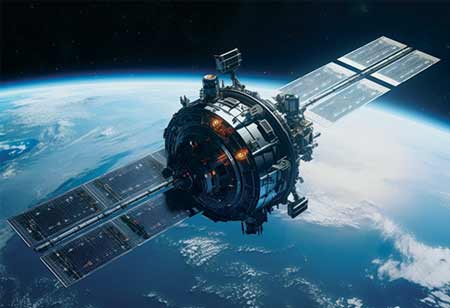THANK YOU FOR SUBSCRIBING

Data-Driven Approach For More Efficient And Low-Emission Infrastructure Construction And Maintenance
Pekka Lammassaari, Head of R&D, Destia Oy

 Pekka Lammassaari, Head of R&D, Destia Oy
Pekka Lammassaari, Head of R&D, Destia Oy Advancing technology is making infrastructure construction and maintenance more efficient and straightforward. Already, data-driven artificial intelligence can pinpoint with greater accuracy when weather conditions require road maintenance actions, which repairs should be targeted where, and which areas need closer inspection. Various AI-based systems are utilised to achieve high-quality results more effortlessly.
We are moving towards diverse AI that combines different techniques, such as natural language processing, computer vision, and machine learning. This AI can make more comprehensive predictions, perform more extensive functions, and interact more naturally by analysing various data types simultaneously and applying the current context.
Progress is rapid, and technology is becoming increasingly human-like. AI is already capable of independent conversation and learning.
Data Forms the Foundation for AI Solutions
So, what do we mean when we talk about AI in the context of infrastructure?
High-quality data, combined with AI solutions, accelerates and enhances decision-making. Technical solutions that leverage AI improve operations throughout the entire lifecycle of infrastructure. Nowadays, data can be collected rapidly, comprehensively, and even in real time.
Many new data collection methods rely on sensor information produced, for example, through smartphones, allowing us to gather information about a vehicle’s environment.
Data plays a significant role in infrastructure planning, construction, and maintenance, and it continues to be acquired through various technical systems and devices throughout the infrastructure lifecycle. Data is at the heart of AI, enabling the utilisation of AI and robotics.
Artificial Intelligence Enables Timely Actions
In monitoring road conditions, artificial intelligence (AI) leverages image and sensor technologies data, allowing for more efficient and accurate targeted repair actions than the human eye can achieve. For road maintenance, AI analyses images sent by weather and traffic cameras, providing realtime information to supervisors and reducing the need for physical inspections.
The amount of collected data is immense. To derive concrete benefits from it, efficient analysis and identification of essential components are crucial. This is where AI comes into play. Machine vision can independently recognise areas requiring attention and indicate which observations need human assessment. As a result, the need for manual inspections decreases, minimising unnecessary travelrelated carbon emissions and equipment wear.
Robots: Integral to Future Infrastructure Projects
In the future, AI that utilises high-quality data will play an increasingly significant role in the entire infrastructure lifecycle. As development progresses, AI will become more adept at solving various tasks independently. Robotics will likely also find their place in many infrastructure projects.
"In monitoring road conditions, artificial intelligence (AI) leverages image and sensor technologies data, allowing for more efficient and accurate targeted repair actions than the human eye can achieve"
Data extracted from the infrastructure lifecycle, refined using AI, enables intelligent and autonomous machines and devices—robots—to be utilised throughout different phases of infrastructure lifecycles. This facilitates more efficient resource management and reduces human errors and delays. Robotics holds great potential for enhancing construction site operations and streamlining tasks such as data collection and reporting.
Data also drives emissions calculations in model-based construction. The focus lies on production data, utilised through a digital platform for modelling project plans and transitioning to model-based execution and monitoring. When a project understands the progression of work stages, it becomes possible to improve processes and approaches.
In model-based production, we can practically track accomplished performance based on production data obtained from the construction site, machinery, and measuring devices. This serves as the foundation for emissions calculations.
Recognising the current situation enables progress. In automated emissions calculations based on production data, the principle is to understand the existing state and its potential for development before creating low-emission operational models. To achieve carbon neutrality goals, companies need to be aware of the emissions caused by their current operations, followed by realistic efforts to reduce them. Monitoring production data provides insights into fuel consumption, work stage progress, and the quality of work.
One ongoing development area is collecting even more detailed data directly from equipment manufacturers. In a broader context, collaborative efforts involve multiple stakeholders. The objective is to create comprehensive, lowimpact contracting methods and new procurement models.
The true utilisation of data materialises when we digitise production processes from start to finish on a platform that forms a situational overview for projects, enabling responsiveness to changes. This streamlines and enhances production processes.
Read Also
Bringing Information Security to the Core
Social Value: Investing in the Legacy of our Projects
Opportunities Offered By Satellite Technology And Low Earth Orbit To The Construction Industry
Bridging Al and Construction: How Model Context Protocol is Transforming AEC Workflows
Transforming Construction through Technology Transforming Construction through Technology
Embracing Employee's Uniqueness by Implementing Individual Development Program

 Copyright © 2025 All Rights Reserved | by:
Copyright © 2025 All Rights Reserved | by: Construction Tech Review
| Subscribe | About us | Sitemap| Editorial Policy| Feedback Policy














